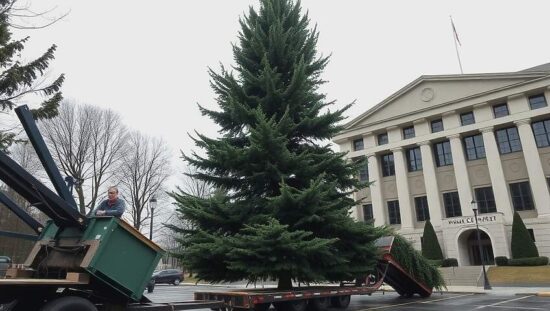The symbolic handover of the traditional Christmas tree before the Chancellery took place on Friday, presided over by Chancellor Friedrich Merz. The towering Nordmann fir, standing approximately 13 meters tall, originates from Plettenberg, Sauerland – a region closely associated with the Chancellor himself. This marks, according to Merz’s statement, the first time a Christmas tree from Sauerland has been selected for the Chancellery, an ostensibly minor detail that has nonetheless drawn political commentary.
Beyond the festive gesture, Merz underscored the critical importance of Germany’s forests and the forestry sector. In a period of heightened scrutiny concerning environmental policy and resource management, the Chancellor’s emphasis on the significance of woodlands feels particularly pointed. Critics, however, have questioned whether such a visually symbolic event adequately addresses the deep-seated challenges facing the German forestry industry, including the impacts of climate change, prolonged droughts and the rising threat of beetle infestations.
The annual gift of the Christmas tree is provided by the Association of German Forest Owners (AGDW), rotating between different federal states, lending a national element to the spectacle. While intended to celebrate the nation’s natural heritage, the selection of a tree from the Chancellor’s home region raises questions about potential regional favoritism and perception management, particularly as the government grapples with complex decisions regarding land use and environmental protection across the country. The carefully orchestrated ceremony provides a visual representation of German tradition but potentially diverts attention from the often-difficult realities faced by the sector.





